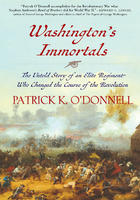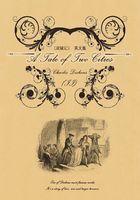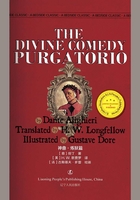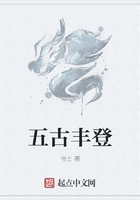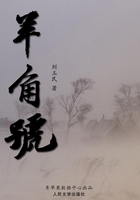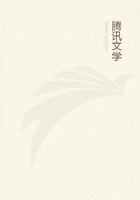Parker J. Palmer
For the Courage Collaboration, thank you for your voices and your courage on the ground.
For Wil and Rus, Grace and J.J., may you always bring your true self to your life's work.
In the early 1990s, with the generous support of the Fetzer Institute, I planted the seeds of what would eventually become the Center for Courage & Renewal-seeds that grew rapidly under the wise, visionary, and grounded leadership of my friends, colleagues, and cofounders, Marcy Jackson and Rick Jackson.
The idea behind our work is to help leaders show up more fully in the workplace-and in every dimension of their lives-with their identity and integrity in hand and intact. To put it another way, we help leaders "rejoin soul and role" in order to gain transformative leverage on the work they do, the institutions in which they do it, and the larger world. As the great social movements have demonstrated, the human soul-or identity and integrity-is an Archimedean point of leverage from which people have moved the world, whether or not they are "positional" leaders.
When I planted those early seeds with the help of the Fetzer Institute, I had no idea that by 2018, they would grow into
·Three hundred well-trained facilitators in the United States, Australasia, Canada, Latin America, the United Kingdom, and Spain, with allied work in South Korea
·Thousands of Courage & Renewal programs of many descriptions
·Tens of thousands of leaders in a range of professions whose lives and work have been transformed by those programs
·Hundreds of thousands of individuals and institutions who've benefited from those transformed leaders
Nor did I ever imagine that someday there would be a book called The Courage Way written by Shelly Francis, my good friend and very able colleague for the past five years. As the Center's marketing and communications director, Shelly has been our chief "story collector," helping us understand what we do, reminding us why we do it, and sharing our story with others.
No one is better equipped than Shelly to write about the components of the Courage Way and to illustrate how transformative they can be, using stories of some of the leaders who've been changed by Courage Work. The book you're holding in your hands is evidence aplenty to back that claim.
I published my first book in 1980. From that day forward, I've been committed to "putting wheels" on my ideas. I did not want to put words on the page and let them lie there passively hoping that someone would read them and, in a few cases, apply them. I wanted to create vehicles with those words-vehicles such as workshops, retreats, and other programs that people could use in pursuit of personal and communal ends, drawing on their own inner resources and the support of a community of peers.
Thanks to hundreds of colleagues and supporters, that's exactly what we've been able to do over the past quarter century-not only with my ideas but with the ideas of many others who have joined in and contributed to the Courage & Renewal cause.
Leaders in many fields-education, health care, business, nonprofit, philanthropy, and religion-have been nurtured by the ideas and practices embedded in Courage Work. It takes courage to "join soul and role" in organizations that make it unsafe to show up with integrity and act in alignment with it. But when we find that courage, our lives become more whole, our work reaches deeper, the people we serve are better served, and, in ways large and small, the world becomes a better place.
As you will learn from this book, Courage Work takes many forms, depending on the setting. But whatever the form, it is rooted in the principles and practices of what we call a Circle of Trust-a way of creating the conditions where people can do inner work in community. The components that go into creating those conditions-the components Shelly has so deftly named and explained in this book-have a proven capacity to touch and transform leaders and the work they do.
When I'm asked for an "elevator" example, the story that most often comes to mind involves a circle that I facilitated some years ago, composed of twenty-four physician leaders of medical residency programs.
During a large-group discussion of a poem about fidelity to purpose, one of the participants said, "I work in a health care system that has me on the edge of violating my Hippocratic Oath several times a week."
One component of Courage Work is deep listening, so no one jumped to respond to this man's comment. Instead, people made silent space for him to listen more deeply to himself. Out of that silence, this physician leader spoke a second time: "You know, that's the first time I've ever said that to a group of professional peers."
There was more silence, then this man spoke again, now in a quieter and more somber voice: "The truth is, that's the first time I've ever said it to myself."
When I heard those words, I knew I had witnessed a pivotal moment in one leader's personal and professional life. He had heard a truth from within that he could not argue with or push away, the way he might have if some "systems expert" had critiqued his workplace. The critique he heard came from his "inner teacher," and it put him on the horns of a dilemma: Do I try to sweep under the rug what I just heard myself say, as if I'd never heard it? Or do I take that inner voice seriously and try to transform my workplace into one that supports rather than threatens my Hippocratic Oath?
The Courage Work this physician did helped him find his courage as a leader. He returned to his job, identified colleagues who shared his concern, and, working together over a period of months, they were able to establish a penalty-free zone for the reporting of medical errors-a major systemic step toward helping hospitals "do no harm."
I hope that this story gives you a glimpse of what I mean when I say that Courage Work touches not only leaders but also their workplaces and the people they serve. Because of this book, you need not attend a Courage & Renewal event to be touched this way. Shelly has done a masterful job of extracting the principles and practices on which our programs are based, and of showing-via well-framed ideas and vivid stories of real people in a variety of leadership roles-how they have been and can be applied by individuals and groups in workaday life.
A final thought before I get out of the way and let Shelly carry on. One of the most important notions we deal with in Courage Work is this: no matter how much devotion and courage leaders bring to important tasks, their jobs are never done. We will forever stand in "the tragic gap," the gap between the hard realities around us and what we know to be possible because we see it with our own eyes from time to time.
Part of the Courage Way is learning to stand and act in that gap-which means resisting our ingrained cultural conviction that we must be "effective" if we and our work are to count for anything, that "Winning isn't everything; it's the only thing!"
We all want our work to be effective, of course. That's why we put so much time and energy into it. But if effectiveness is our only norm, we will die in despair, or drop out long before we have made our fullest contribution. Think of anyone you regard as courageous because he or she lived a life devoted to high values like love, truth, and justice. Now ask yourself whether he or she was able to die saying, "I'm sure glad I took on that task, because now everyone in the world can scratch it off their to-do list forever." The answer is obvious.
In order to continue working on vital tasks that will never be accomplished, we need a norm that does not replace but supersedes "effectiveness." The name of that norm, I think, is "faithfulness." Faithfulness to our own best gifts, faithfulness to the needs around us, and faithfulness to those points where our gifts might contribute to meeting some of those needs: that should be the ultimate measure of work well done and a life well lived.
It takes courage for leaders to persevere, to stand and act in the tragic gap, taking small steps day in and day out to create and sustain organizations where trust, integrity, and authenticity can flourish. If we are to make this world a better place, we need a lot of leaders who are willing and able to walk this way for the long haul.
Welcome to a book that offers guidance, inspiration, and practical support for people like that-for people like you.

